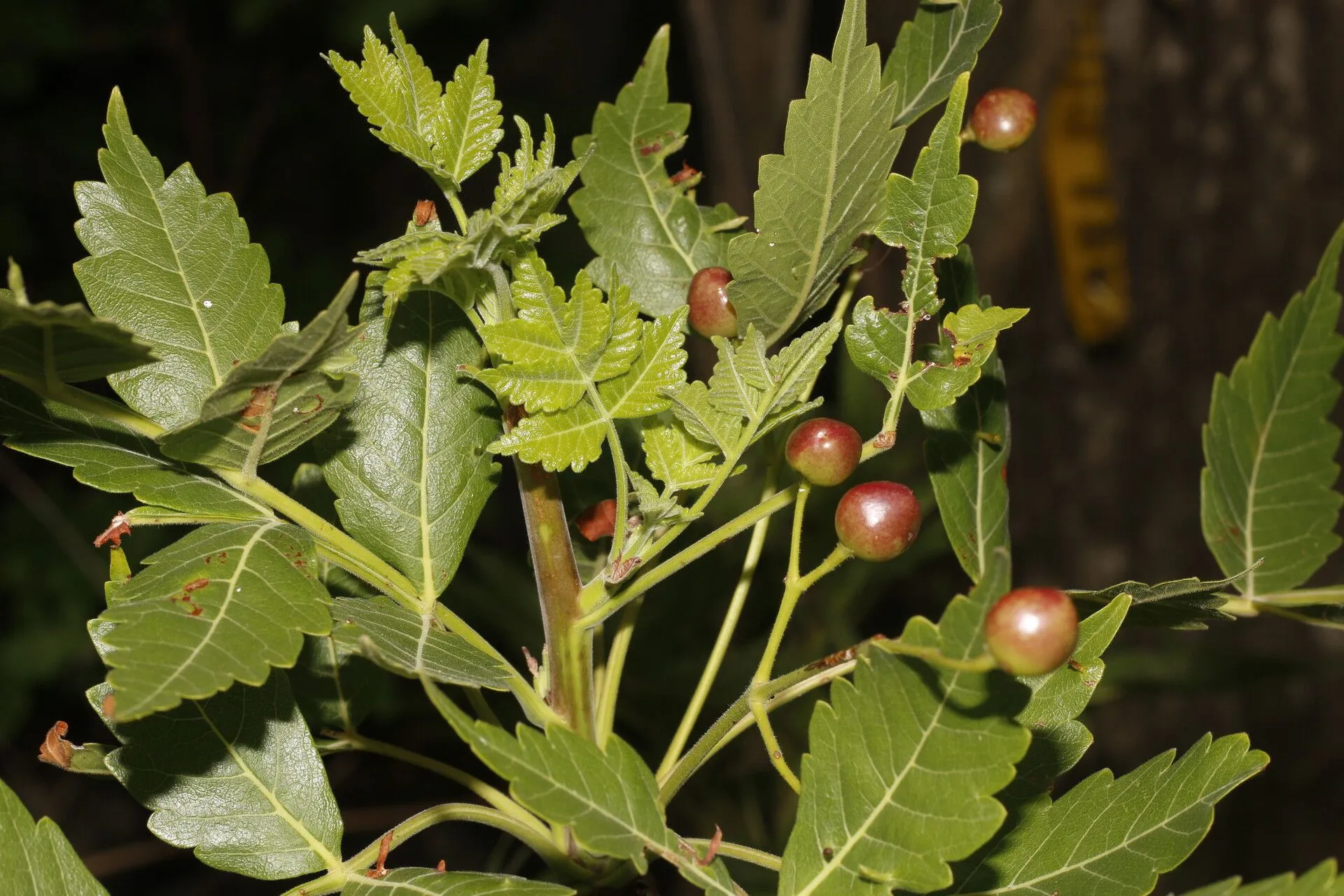
Author: (Kunth) Triana & Planch.
Bibliography: Ann. Sci. Nat., Bot., sér. 5, 14: 303 (1872)
Year: 1872
Status: accepted
Rank: species
Genus: Bursera
Vegetable: False
Observations: Mexico to NW. Venezuela and Peru
Palo santo, with the scientific name Bursera graveolens, is a tree known for its aromatic wood and traditional uses. Originating from regions spanning Mexico to northwestern Venezuela and Peru, this tree holds significant cultural and spiritual value.
Belonging to the Burseraceae family, Palo santo possesses a unique botanical heritage. It was first described in the scientific literature in 1872, under the authorship of Kunth and later classified by Triana & Planch. The tree is often recognized for its fragrant resin and essential oils, which have been utilized for centuries in both spirituality and natural medicine.
The name “Palo santo” translates to “Holy Wood” in Spanish, reflecting its revered status among indigenous cultures. The wood is often burned as incense, creating a soothing aroma believed to cleanse negative energies and promote healing and relaxation. Additionally, its oil is widely used in aromatherapy and alternative medicine, praised for its anti-inflammatory and stress-relieving properties.
Palo santo trees thrive in dry tropical forests and can reach heights of up to 18 meters. The trees are well adapted to their environment, displaying drought resistance and resilience to the challenges of their native habitats. Sustainable harvesting practices are crucial to ensuring the conservation of these valuable trees, as overharvesting can threaten their populations.
Overall, Palo santo continues to be treasured for its spiritual, medicinal, and cultural significance, making it a cherished component of the natural world.
Spa: palo santo, crispin, sasafrás, coyoluche, coyoluxi, mizquixochicopalli (náhuatl); nabanche, x-chité (maya); aceitilla, aceitillo, azafrán, palo hediondo (español),
En: Palo Santo, Crispin
Es: Crispin, Palo santo, Sasafrás, Coyoluche, coyoluxi, mizquixochicopalli (náhuatl); nabanche, x-chité (maya); aceitilla, aceitillo, azafrán, palo hediondo (español),, Coyoluche, Coyoluxi, Mizquixochicopalli (náhuatl); nabanche, X-chité (maya); aceitilla, Aceitillo, Azafrán, Palo hediondo (español)
Taken Jun 13, 2021 by Nelson Zamora Villalobos (cc-by-nc)
Taken Jun 13, 2021 by Nelson Zamora Villalobos (cc-by-nc)
Taken Jun 24, 2020 by Querales Wladimir (cc-by-sa)
Taken Jun 17, 2021 by leon sebastian (cc-by-sa)
Taken Jul 7, 2022 by G De Venezuela (cc-by-sa)
Taken Jun 13, 2021 by Nelson Zamora Villalobos (cc-by-nc)
Taken Jun 13, 2021 by Nelson Zamora Villalobos (cc-by-nc)
Taken Jun 13, 2021 by Nelson Zamora Villalobos (cc-by-nc)
Taken Jun 13, 2021 by Nelson Zamora Villalobos (cc-by-nc)
Taken Jun 13, 2021 by Nelson Zamora Villalobos (cc-by-nc)
Taken Jun 13, 2021 by Nelson Zamora Villalobos (cc-by-nc)
Taken Jun 13, 2021 by Nelson Zamora Villalobos (cc-by-nc)
Taken Jun 13, 2021 by Nelson Zamora Villalobos (cc-by-nc)
Taken Jun 13, 2021 by Nelson Zamora Villalobos (cc-by-nc)
Taken Jul 24, 2014 by Nelson Zamora Villalobos (cc-by-nc)
© copyright of the Board of Trustees of the Royal Botanic Gardens, Kew.
© copyright of the Board of Trustees of the Royal Botanic Gardens, Kew.
Family: Myrtaceae Author: (F.Muell.) K.D.Hill & L.A.S.Johnson Bibliography: Telopea 6: 402 (1995) Year: 1995 Status:…
Family: Rubiaceae Author: Pierre ex A.Froehner Bibliography: Notizbl. Bot. Gart. Berlin-Dahlem 1: 237 (1897) Year:…
Family: Sapindaceae Author: Koidz. Bibliography: J. Coll. Sci. Imp. Univ. Tokyo 32(1): 38 (1911) Year:…
Family: Asteraceae Author: A.Gray Bibliography: Pacif. Railr. Rep.: 107 (1857) Year: 1857 Status: accepted Rank:…
Family: Fabaceae Author: Medik. Bibliography: Vorles. Churpfälz. Phys.-Ökon. Ges. 2: 398 (1787) Year: 1787 Status:…
Family: Aspleniaceae Author: (Cav.) Alston Bibliography: Bull. Misc. Inform. Kew 1932: 309 (1932) Year: 1932…